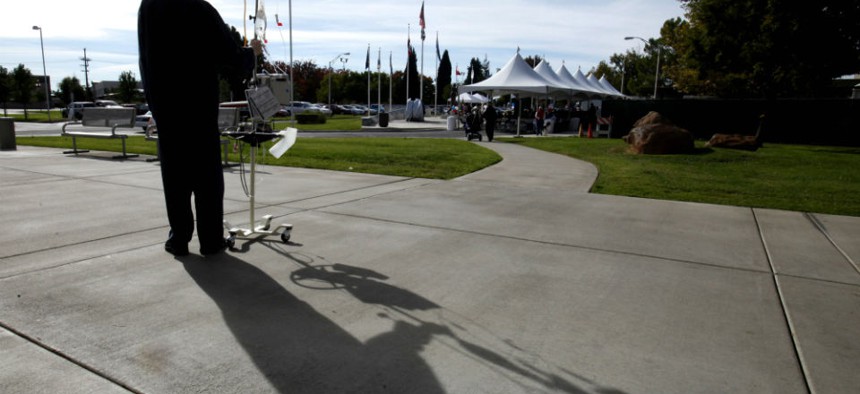VA Expects Award of New Patient-Scheduling Contract by September

Michael Bruce, a patient at the Sacramento Veterans Affairs Medical Center, watches a Veterans Day ceremony held at the center in Rancho Cordova, Calif. Rich Pedroncelli/AP File Photo
Anticipates lengthy transition from old to new system.
Top Veterans Affairs Department officials anticipate VA will award a contract for a new patient-scheduling system by Sept. 30, the end of the fiscal year, but procurement documents show a lengthy transition process from the old to new system.
Stephen Warren, VA chief information officer, on June 10 told a Senate VA committee hearing he expects award of the patient-scheduling contract before the fiscal yearend. Steven Schliesman, assistant deputy CIO for project management, on June 11 told an industry meeting that vendors will have a chance to pitch and demonstrate their commercial scheduling applications at meetings from June 30 to July 2.
Warren said these “individual vendor interviews [are designed] to make sure we have the acquisition correct.”
Acting Secretary Sloan Gibson described the vendor meetings as another way to improve the scheduling process.
“We’re taking a series of immediate actions to ensure our veterans receive the timely access to quality health care they have earned and deserve,” he said. “We need lasting, long-term reforms, including a complete overhaul to replace the outdated technology for our scheduling system.”
Gibson added: “Bringing an innovative scheduling product into our world-class electronic health record system is a crucial part of providing the scheduling staff in our facilities with the tools necessary to succeed. Our veterans deserve nothing less than our best, and that’s exactly what we intend to give them."
The May 30 sources sought announcement for the Medical Appointment Scheduling System makes it clear VA “anticipates a lengthy transition” from the current system to the new solution, with no defined time frame. It asked for vendor input on how to best configure and deploy the new system.
Schliesman explained the current scheduling system is a component of the Veterans Health Information Systems and Technology Architecture system, which “is antiquated and frustrating to use for both our veterans and providers.” He said the legacy scheduling system is dependent on 41 VistA software packages and in turn, 71 VistA software packages rely on VistA scheduling. This cross-dependency, he added, represents more than a thousand individual integration points.
Transition from the old to the new, Schliesman said, will require synchronization of appointment data between the two systems, VA patients and clinicians.
The new system must support veteran interaction, self-help and support national scheduling, Schliesman said.
NEXT STORY: Do More 24: Like a code sprint for charity



